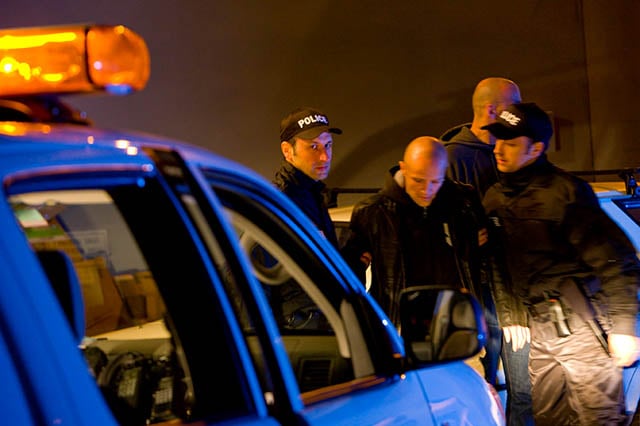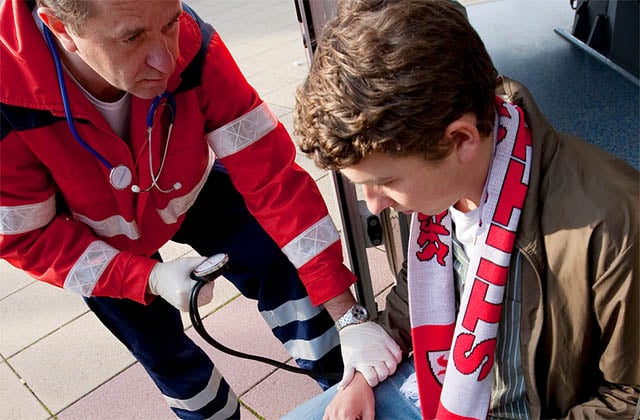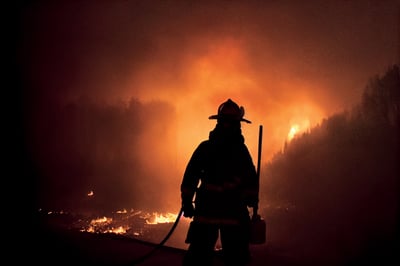Think about event security at a football match, for example.
How would things be if the people responsible for security could use seamless, mission critical communications? What if different communication technologies could actually work together? What if the people event staff could enjoy a smooth mission critical user experience?
…That time may be closer than you think.
Mission critical communications at a football match
Picture a football match where five types of professional participants need to communicate:
- Event Control
- Police
- Paramedics
- Fire/Rescue
- Security crew.
The people in each of these roles could cooperate and coordinate smoothly if they had mission critical communications based on a seamless interworking of networks, technologies, and devices.
These are just 9 examples of situations where better communication solutions would help people achieve effective cooperation – and better security at an important sports event.
1. How long are the queues outside?
Security staff posted at the entrances use a professional, instant messaging app to tell others the current queue length. “Entrance A: More than 30 people are still queuing and the kick-off should be in 2 minutes”. “Entrance C: Same here.” “Entrance B: 15 in the queue here.”
The same messages go automatically to the Event Control as well.

Thanks to instant group communications, all the relevant people get the information right away. The Event Control and the teams at each entrance will have an overview of the queuing situation.
2.What if the kick-off must be slightly postponed?
If the kick-off needs to be postponed, Event Control will make a broadcast announcement to all teams: Security crew, Police, Paramedics, and Fire/Rescue. Everyone involved in securing the event stays up-to-date on the situation.
In addition, this announcement goes automatically to the stadium speakers: “Kick-off will be 10 minutes late.”
3. How to deal with behavior problems?
Security staff notice that a person is behaving in an unacceptable way. This requires either further questioning or that the person is apprehended. The Security team needs the police to act on this.
One call to the right group is fast and makes sure that the Security get the necessary support from the police.

Handpicked related content
In a worse case scenario, the unacceptable behavior could involve firecrackers. There could be a small fire. Take a look at the possibilities of advanced communications in this video: "How to manage a fire incident at a football stadium".
4. How to communicate across teams
Teams can talk together in a group call, no matter which kind of device they are carrying. Radio users can also communicate with smartphone-carrying team members. All teams enjoy a mission critical user experience regardless of their device. They also do not need to know who carries which device. That’s all taken care of by the group administrators.
Handpicked related content
What is the meaning of a mission-critical user experience? It includes all interactions with mission-critical services and products. This includes the whole ecosystem of solutions: apps and devices, communication services and the communication network.
Learn more! Watch this webinar: “Where is the mission critical user experience heading in the next five years?” Top experts discuss the mission critical experience and talk about how user device design will develop towards the future.
5. How to deal with a lost child scenario?
One of the spectators finds a crying child who cannot find her father. He gets in touch with the nearby paramedic. She shoots a short video clip of the child and sends it to Event Control.
Because communications are private, the video is secure and only the relevant event staff will see it.
Event Control can now send an instant message to the nearby units: “A child is looking for his father.” The units will know where the child is. When the father starts looking for his child and reaches out to Event Control, he can be led to the child immediately.
A happy end, thanks to secure, seamless communication across teams.
6. When first aid is needed
Security calls paramedics to help with a person suffering from a seizure. They send the destination “Level 3, Stand 4, middle aisle” and a seating plan so paramedics can easily find the place.
First aid or resuscitation can start without delay.

7. Suspicious packages?
A rookie paramedic spots a backpack without an apparent owner. He takes its picture and shares it with Security, asking for instructions on what to do. He gets the answer right away.
Thanks to effective group communication, he gets guidance on how to investigate the package safely.
8. Sharing the weather forecast
Event Control gets an automatic alert: the weather will change suddenly and dramatically. They share the storm cloud animation with all event staff so that they can prepare.
The game officials also get a message and are ready to stop the game if things get really bad.
9. Post-game security
The game is over and people are leaving the stadium. One of the exits is badly flooded because of the rain storm. Event Control makes a broadcast announcement to all event staff and to the stadium loudspeakers that the exit is not in use.

These nine simple cases describe how mission critical communications could improve sports security.
One of the building blocks that your organization needs is a professional app that can connect radios and smartphones and deliver secure, instant group communications.
Handpicked related content
For example, Tactilon® Agnet is such a professional app. Learn more about its capabilities! Download the brochure “Tactilon Agnet for instant communications - Collaboration of a new generation”.
With the right app, people in action can use video, perform database queries, and take advantage of data analytics. This will eventually transform the way people work.
But introducing new opportunities should not disrupt your operations. Learn how to avoid this when adopting broadband for public safety or other professional organizations. Download free white paper "How to minimize risks when introducing mission-critical broadband".





